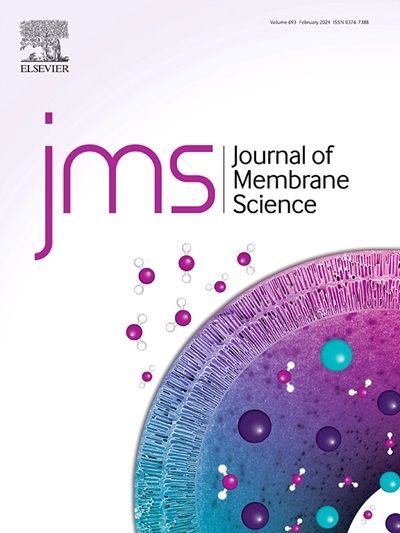Hybrid model as an efficient predictor of mass transfer behavior in hollow fiber membrane contactors with complex geometries
IF 8.4
1区 工程技术
Q1 ENGINEERING, CHEMICAL
引用次数: 0
Abstract
Hollow fiber membrane contactors coupling amine absorption method have emerged as an ideal choice for carbon capture due to their high specific surface area, low cost, and ease of scalability. In this study, COMSOL Multiphysics 6.0 software was used to develop three-dimensional (3D) and two-dimensional (2D) models to investigate the CO2 mass transfer performance of N-Methyldiethanolamine (MDEA) + Piperazine (PZ) and 3-Dimethylamino-1-propanol (3DMA1P) + 2-(Methylamino)ethanol (MAE) blended solutions under various operating conditions, and the simulation results were evaluated with the experimental data. The results indicate that the outcomes obtained from the 2D model are generally higher than the experimental data, whereas the results from the 3D model show good agreement with the experimental data. Considering the stringent convergence conditions, low computational efficiency, and the inability of 3D models to dynamically describe the changes in mass transfer performance under membrane wetting conditions, a 2D-3D hybrid model was developed, making it possible to efficiently compute mass transfer performance during the dynamic membrane wetting process. The hybrid model was developed by quantifying the uneven fluid distribution from the 3D model into correction factors for both the gas and liquid phases, and incorporating these factors into the original 2D model. By comparing the simulation results of the hybrid model with experimental data, it is found that the non-wetting hybrid model for the MDEA + PZ blended solution exhibits strong agreement with experiments, achieving an absolute average relative deviation (AARD) within 4.95 %. Meanwhile, for the 3DMA1P + MAE mixed solution, the 5 % wetted hybrid model accurately predicts mass transfer performance with an AARD of less than 5.55 %. Moreover, the results obtained from the hybrid model are consistent with those from the 3D model, while significantly reducing the calculation time from over 3 h to less than 1 h. This demonstrates that the hybrid model can efficiently and accurately predict CO2 absorption flux (JCO2) and membrane wetting under various operating conditions.

求助全文
约1分钟内获得全文
求助全文
来源期刊

Journal of Membrane Science
工程技术-高分子科学
CiteScore
17.10
自引率
17.90%
发文量
1031
审稿时长
2.5 months
期刊介绍:
The Journal of Membrane Science is a publication that focuses on membrane systems and is aimed at academic and industrial chemists, chemical engineers, materials scientists, and membranologists. It publishes original research and reviews on various aspects of membrane transport, membrane formation/structure, fouling, module/process design, and processes/applications. The journal primarily focuses on the structure, function, and performance of non-biological membranes but also includes papers that relate to biological membranes. The Journal of Membrane Science publishes Full Text Papers, State-of-the-Art Reviews, Letters to the Editor, and Perspectives.
 求助内容:
求助内容: 应助结果提醒方式:
应助结果提醒方式:


